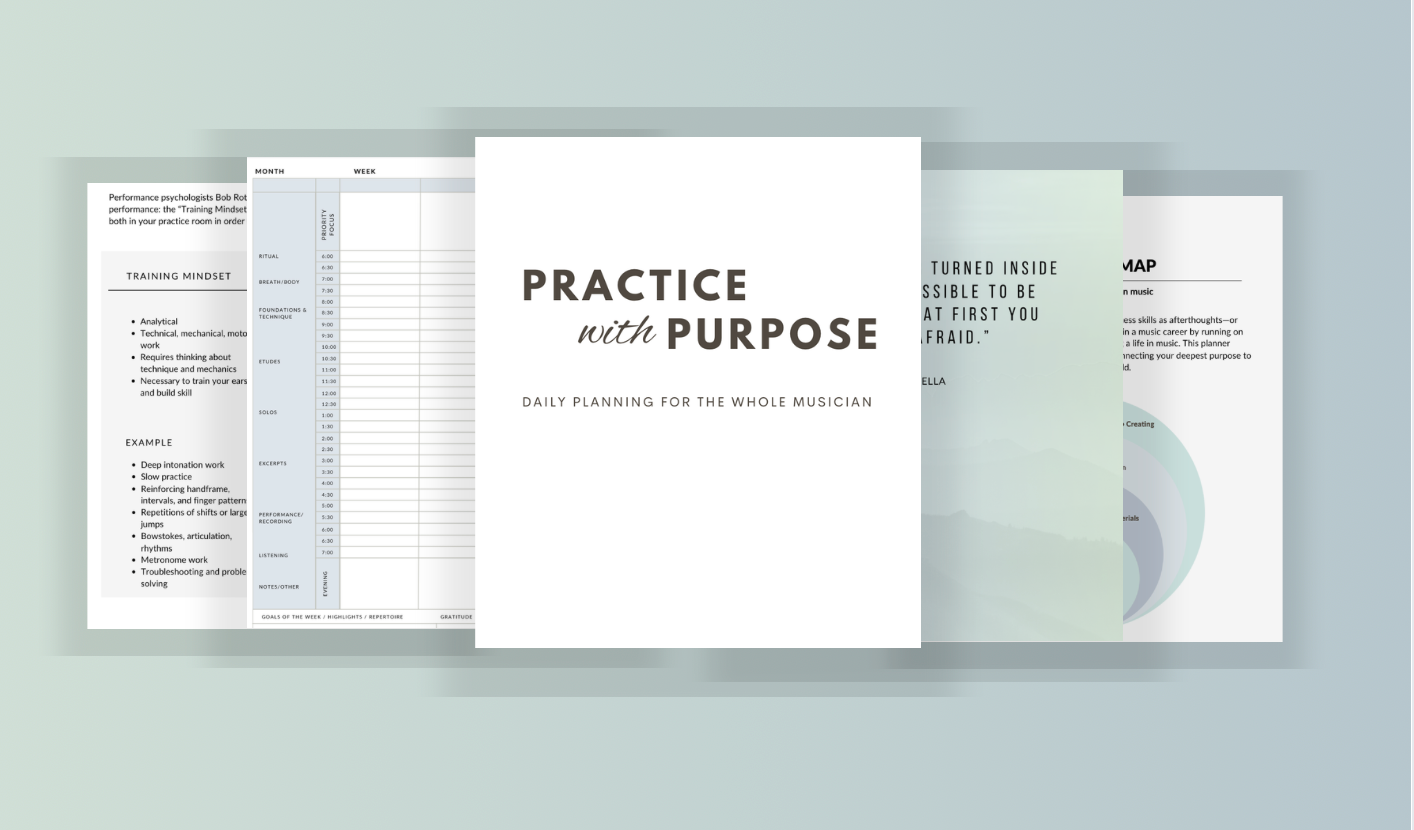3 Ways to Build a Resume that Shines!

The resume stage is often the first impression a potential employer will have of you . Your goal with the resume is to get invited to the next round, whether it’s a phone call, an invitation to interview, or a live audition.
We’ve seen hundreds of resumes, both ones that come through for auditions and those that our students prepare for positions in the music industry. We gotta say, not many truly stand out and do the job they’re supposed to do! So how do you build one that shines?
Here are 3 ways to take your resume from scrawny to brawny!
Before we get to that list, let's quickly define "resume".
What it is and what it isn't
A resume is part of a packet of material a potential employer asks for, before the interview round of a job search. Depending on the job, other materials often required may include a CV, a cover letter, references, a writing sample, or a portfolio.
It is 1-2 page (not more!) document that showcases your experience and highlights your qualifications specific to the position for which you’re submitting.
It's not a detailed history. You might think it's a history of what you've done... but really, it needs to be a STORY of you and your trajectory! You have to give the resume reader a sense of your potential as the best-qualified candidate, particularly in alignment with the position they want to fill.
Your resume, your story
Let's dig in on building an articulate, clear, and beautifully designed resume. The three key components we’ll talk about are: Section content, resume format and design considerations, and copy that is concise and compelling
1. Section must-haves
The main sections you should include in a resume:
Contact information: Obviously you need your contact info! This includes your name, phone number and a professional email address. Note the word "professional"! If your email address is anything like "dopedavid420", "bacardigurl" or "giggles321" please for the love of all things change it.
Experience:
In this section you’ll list the positions you’ve held and any accomplishments achieved, often with subsections that further separate orchestral, chamber music or solo recital experience.
Education:
Your earned degree or degrees, plus any degrees in progress. Include the university, college, or conservatory you attended, along with the location, area of study, and dates. Some list the teacher they studied with under each degree, but you can also opt to create a subsection with just the names of the teachers.
Honors and Awards:
If relevant, include this section if you’ve won competitions, graduated cum laude, or recieved a named scholarship, or if you were profiled in a magazine, showcase it here! This gives readers a broader sense of who you are, and how you’ve been recognized by the world at-large.
The following are highly recommended in 2022! As young musicians entering the industry, or an experienced professional looking to pivot, you have to present a well-rounded, diverse skill set. These two sections can add depth to your story:
Objective, summary statement or professional profile:
This is a short 1-2 sentence statement that presents your expertise, experience, and success in a nutshell. Do you need one? I’m going to say yes! While this is a section that is part of resumes in other fields, it can be a chance for you to pack an attention-keeping punch with who you are, even in music- and even performance-specific resumes!
Skills:
This section is optional but more and more, employers are looking to hire well-rounded people with good soft and hard skills. Knowing you have certain skills, training or certifications in the music industry, or across fields can make an impression. Include soft skills such as teamwork, attention to detail, creativity, leadership and technical skills such as music theory knowledge, improvisation ability or second instrument expertise.
2. The format and design of your resume.
Did you know that 40% of resume readers spend less than 1 minute scanning your resume? (Yep, been guilty of that here!) Ask yourself, would someone scanning your resume put it in the "yes" pile after 10 seconds?
Your resume should be clear, and formatted for relevance and readability. Then go ahead, use an eye-catching layout!
Build the sections of your resume to speak directly to the advertised position. This is called a field-specific resume or a targeted resume. Let’s say you’re going for a job teaching music theory. You wouldn’t put your performance experience first! No, you’d put all the skills, past positions, experience, and education related to teaching and music theory first!
Next, keep things simple and clear:
- Do use capitalized and or bold font for section headers.
- Do stick with traditional fonts, usually Arial, Times New Roman, or Helvetica in 9-12 point size, in black. You can incorporate 2 different fonts but too many and you'll lose the reader.
- Don’t use colored paper, or anything but a white background.
- Do use bullet points
- If you include short descriptions of anything, you can use sentences.
- To make things easy to read, you can create columns. One or two columns that space out dates, job titles, and if including it, a description.
- Remember to list things in reverse chronological order, with the most recent at the top!
3. Concise and compelling copy (a.k.a. write well!)
Any copy in your resume, for example in your profile summary, objective or job descriptions should use dynamic and active words. Your word choices can be impactful!
- Lead with action words and keep it short!
Action words: Acheived, Created, Resolved, Managed, Directed, Coordinated
Ex: I was responsible for lesson scheduling → Managed lesson schedule
Ex: For three years I was head of the negotiation committee → Headed negotiation committee for three seasons
- Use nouns or phrases that are used in the job listing, that when repeated can be a big boost to the relevance of your resume. By using key terms that the employer uses, you show you are a good fit for the job.
- Your past job titles are your story, so write them well. If there wasn’t an official title for your role, create one that doesn’t lie or mislead the reader!
- Avoid vague or over-used phrases. Replace them with dynamic descriptives!
Vague: Customer-oriented, creative, unique, has communication skills
Overused: "Results-driven self-starter"
Dynamic: affinity, combination, cultivation, impactful, quantifiable - If you are including statistics, bold them! Percentages and numbers that quantify your achievements are attention-catching, so feel free to include and even bold these. For example: Increased enrollment by 40%.
Thoughtful word choices can be impactful and compelling!
One last word: After putting your resume together, look through it for any spacing, grammar, spelling or formatting errors.
We hope these ideas help you feel more confident about revamping your resume or building one from scratch!


